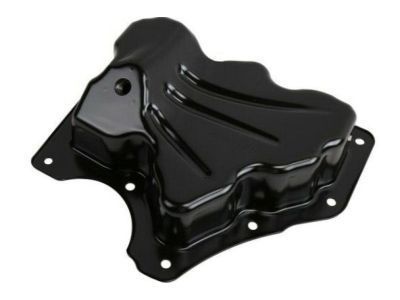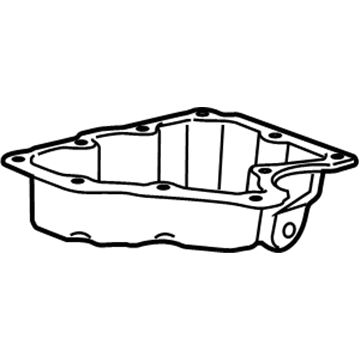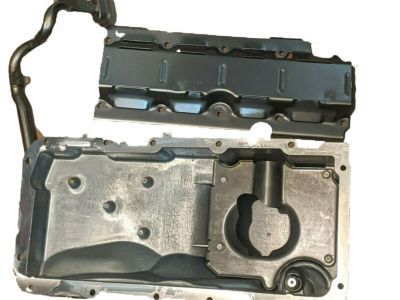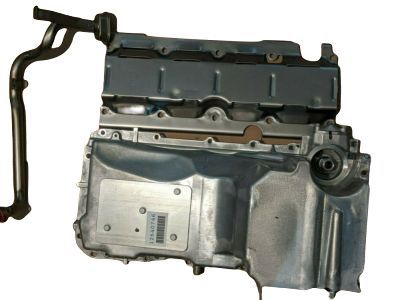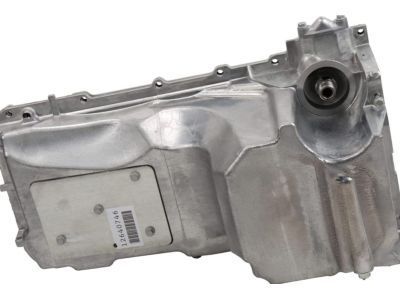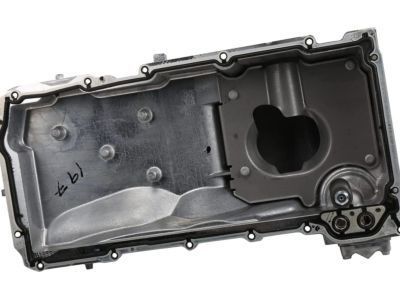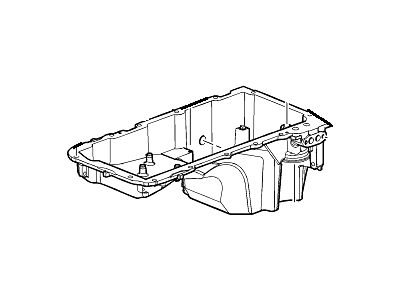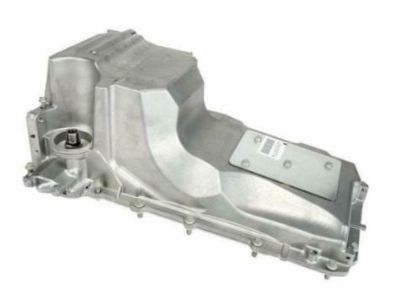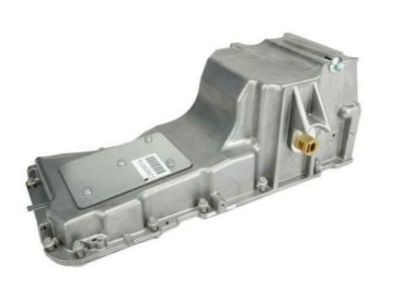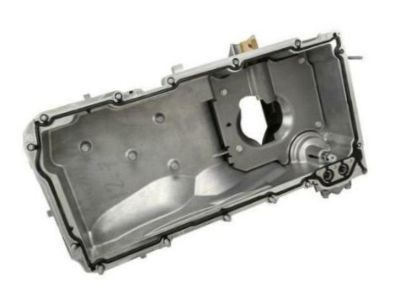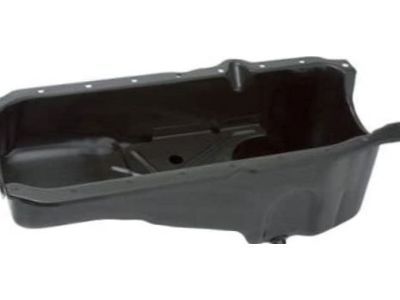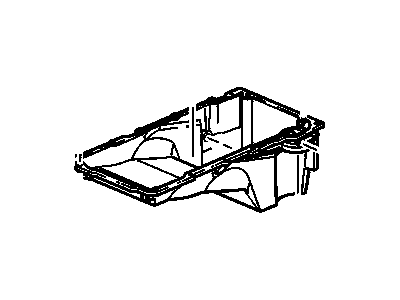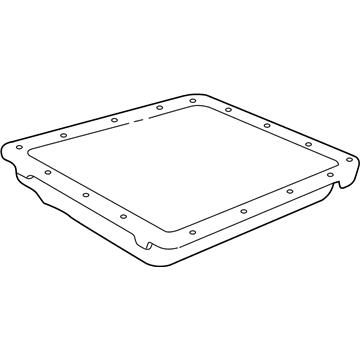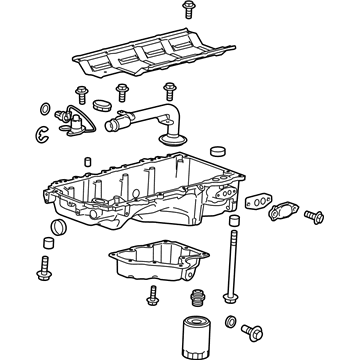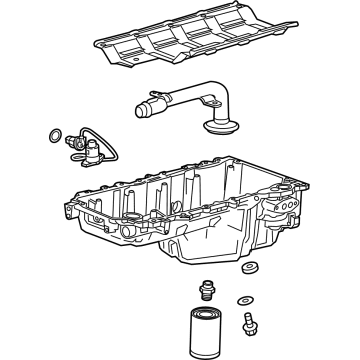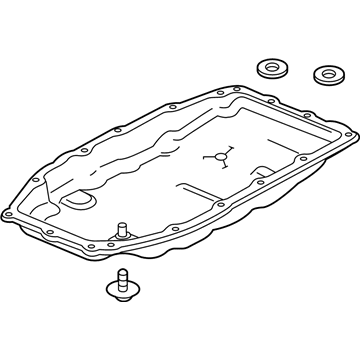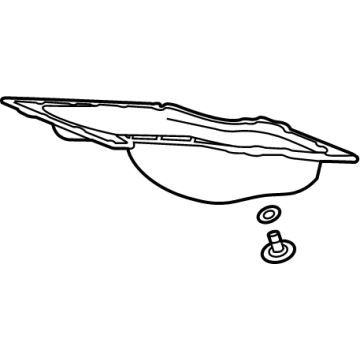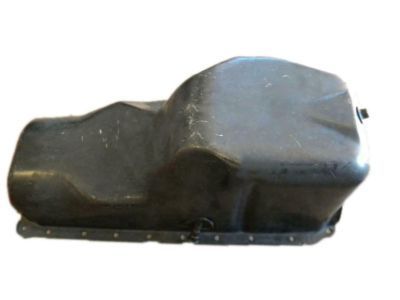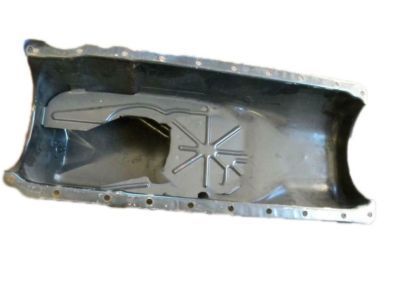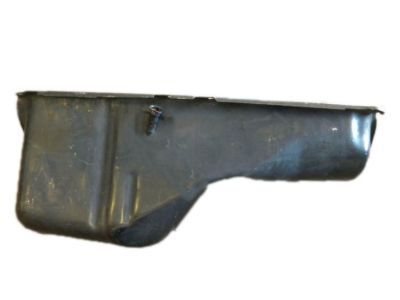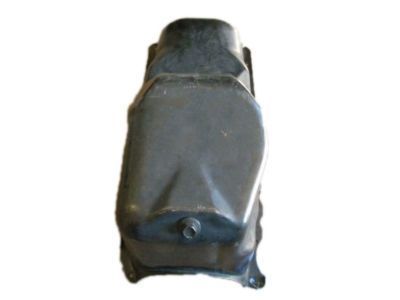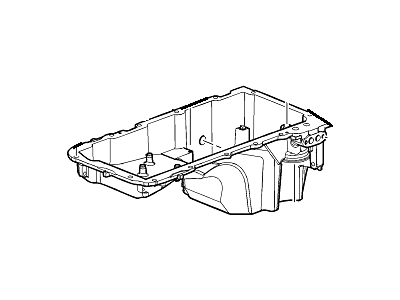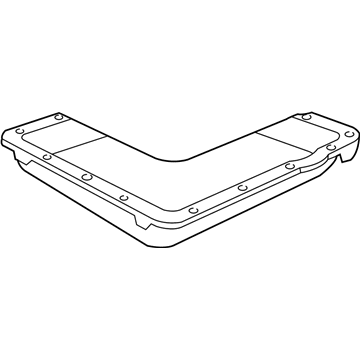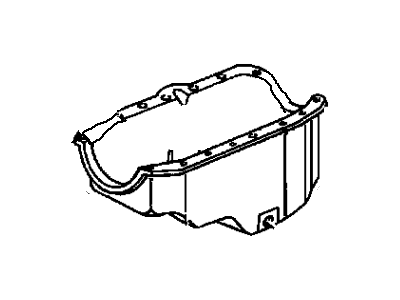
My Garage
My Account
Cart
Genuine Chevrolet Tahoe Oil Pan
Oil Drain Pan- Select Vehicle by Model
- Select Vehicle by VIN
Select Vehicle by Model
orMake
Model
Year
Select Vehicle by VIN
For the most accurate results, select vehicle by your VIN (Vehicle Identification Number).
19 Oil Pans found
Chevrolet Tahoe Lower Engine Oil Pan
Part Number: 12669909$48.72 MSRP: $83.30You Save: $34.58 (42%)Ships in 1-2 Business DaysChevrolet Tahoe Pan Assembly, Oil
Part Number: 12640746$224.03 MSRP: $383.11You Save: $159.08 (42%)Ships in 1-2 Business DaysChevrolet Tahoe Pan Assembly, Oil
Part Number: 12609074$215.14 MSRP: $367.87You Save: $152.73 (42%)Ships in 1-2 Business DaysChevrolet Tahoe Pan,Oil
Part Number: 12557558$174.95 MSRP: $301.79You Save: $126.84 (43%)Ships in 1-3 Business DaysChevrolet Tahoe Pan,Oil (W/Filt Bypass)
Part Number: 12579273$312.05 MSRP: $538.29You Save: $226.24 (43%)Ships in 1-2 Business DaysChevrolet Tahoe Pan Assembly, A/Trns Fluid
Part Number: 24045035$37.46 MSRP: $64.61You Save: $27.15 (43%)Ships in 1-2 Business DaysChevrolet Tahoe Pan Assembly, Oil
Part Number: 12684605$218.80 MSRP: $348.96You Save: $130.16 (38%)Ships in 1-3 Business DaysChevrolet Tahoe Pan Assembly, A/Trns Fluid
Part Number: 24045038$43.77 MSRP: $68.88You Save: $25.11 (37%)Ships in 1-2 Business DaysChevrolet Tahoe Pan Assembly, Oil
Part Number: 12619011$138.93 MSRP: $219.58You Save: $80.65 (37%)Ships in 1-3 Business DaysChevrolet Tahoe Pan Assembly, Lwr Oil
Part Number: 55506665$54.77 MSRP: $87.32You Save: $32.55 (38%)
Chevrolet Tahoe Oil Pan
Chevrolet Tahoe Oil Pan is part of the engine lubrication system responsible for the required oil volume that engine needs for lubrication. Located at the lower end of the engine; the oil pan is vulnerable to being impacted by road elements which if one is subdued can lead to leaking off of oil. When changing the oil, the drain plug on the oil pan is removed effectively and replaced if need be. The oil pan known as the sump is the chamber where the oil is stored ready to be drawn upon to adequately lubricate the engines moving parts. In some high-performance vehicles such as; racing motorcycles and piston aircraft engines, a "dry sump" system is applied and used to deal with the shortages of oil by applying scavenge pumps and a swirl tank which separates the oil from the air.
Each OEM Chevrolet Tahoe Oil Pan we offer is competitively priced and comes with the assurance of the manufacturer's warranty for the part. Furthermore, we guarantee the speedy delivery of your orders right to your doorstep. Our hassle-free return policy is also in place for your peace of mind.
Chevrolet Tahoe Oil Pan Parts Questions & Experts Answers
- Q: How to remove and replace the oil pan on V8 engine on Chevrolet Tahoe?A:Disconnect the cable from the negative terminal of the battery. Raise the vehicle and support it securely on jackstands, drain the engine oil, and remove the oil filler. Remove the oil pan skid plate, if equipped. Unbolt the steering rack and allow it to hang out of the way. On 4WD vehicles, remove the front differential carrier. Remove the transmission bell housing covers from the rear of the engine block. Remove the crossmember. Remove the lower transmission-to-engine bolt(s). These bolts vary depending on the model of transmission used but all screw into the oil pan. Disconnect the wiring from the engine oil level sensor. Disconnect the wiring harness retainers from the oil pan. Disconnect the oil cooler lines from the oil pan on models with automatic transmissions. Remove all the oil pan bolts, then lower the pan from the engine. The pan will probably stick to the engine, so strike the pan with a rubber mallet until it breaks the gasket seal. Drill out the rivets securing the oil pan gasket to the oil pan and remove the old gasket. Wash out the oil pan with solvent. Thoroughly clean the mounting surfaces of the oil pan and engine block of old gasket material and sealant. Wipe the gasket surfaces clean with a rag soaked in brake system cleaner. Apply a 3/16-inch wide, one-inch long bead of ATV sealant to the corners of the block where the front cover and the rear cover meet the engine block. The gasket tabs protrude at these points and must have sealant around them. Attach the new gasket to the pan, install the pan, and tighten the bolts finger-tight. Be sure the oil gallery passages in the pan and the gasket are aligned properly. Install all of the oil pan mounting bolts snugly. Install the lower transmission mounting bolts snugly. Tighten the oil pan bolts and the transmission bolts to the correct torque specifications. The remainder of installation is the reverse of removal. Add the proper type and quantity of oil, start the engine, and check for leaks before placing the vehicle back in service.
Related Chevrolet Tahoe Parts
Browse by Year
2024 Oil Pan 2023 Oil Pan 2022 Oil Pan 2021 Oil Pan 2020 Oil Pan 2019 Oil Pan 2018 Oil Pan 2017 Oil Pan 2016 Oil Pan 2015 Oil Pan 2014 Oil Pan 2013 Oil Pan 2012 Oil Pan 2011 Oil Pan 2010 Oil Pan 2009 Oil Pan 2008 Oil Pan 2007 Oil Pan 2006 Oil Pan 2005 Oil Pan 2004 Oil Pan 2003 Oil Pan 2002 Oil Pan 2001 Oil Pan 2000 Oil Pan 1999 Oil Pan 1998 Oil Pan 1997 Oil Pan 1996 Oil Pan 1995 Oil Pan

